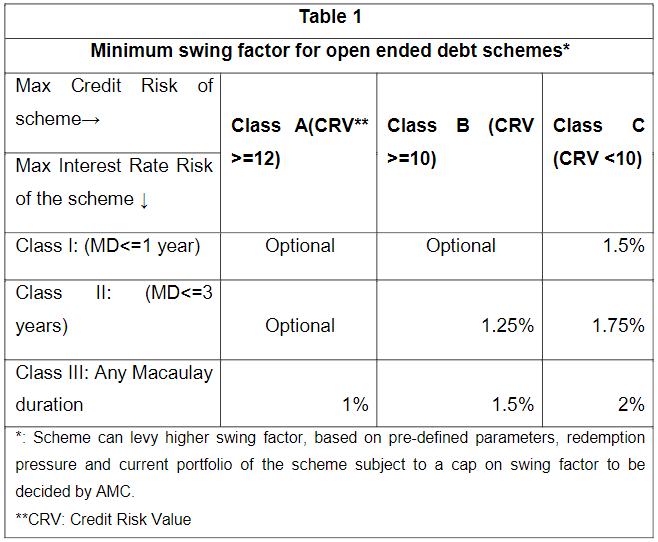What is swing pricing?
Swing pricing is a concept which allows AMCs to change NAVs when there is heightened redemption or massive inflows. They can lower the NAV by a certain percentage in case of big outflows and increase it when they see high inflows.
The purpose of swing pricing is to preserve value of debt funds during tough times. A reduction in NAV demotivates investors who are looking to redeem and attracts fresh inflows during difficult times. Hence, ensures stability for the debt fund.
Let's understand the concept with the help of an example.
Suppose a scheme with Rs 100 crore AUM gets a sudden withdrawal request of Rs 10 crore from one of the major investors. In such a scenario, the fund house will be forced to sell a large number of underlying bonds to honour the request. This becomes problematic when the liquidity of the asset is low. Forcefully selling the bonds leads to lower realisations and a subsequent decline in NAV.
This shows how the action of one investor can lead to losses for all the other investors without any fault of theirs.
Many countries use swing pricing to solve this problem. The concept allows AMCs to set maximum withdrawal limit at the prevailing NAV. Anyone crossing the limit, gets a lower NAV. This discourages investors from redeeming large amounts at one go.
As of now, the plan is to implement swing pricing only in scenarios of high redemptions. It will not be applicable on investments.
How does swing pricing work?
Swing pricing calculation is based on swing factor, which is a predetermined percentage. If the swing factor is 2%, then the investor's redemption value will broadly be this — (98% of NAV) x number of units.
98% was arrived at by deducting the swing factor from 100. If the swing factor would have been 1, the percentage would be 99.
Suppose, the NAV is Rs 20 and the number of units being withdrawn is 500, then the final amount will be (98% x 20) x 500, which is equal to Rs 9,800 instead of Rs 10,000 (NAV x units) during normal times.
When can AMCs trigger swing pricing?
It will depend on the market situation. There will one criteria for normal times and another for 'market dislocation' period (when there is turmoil in the market). Swing pricing during normal times is referred to as 'partial swing' and in troubled times as 'full swing'. The final decision on the criteria for both the situations is yet to be taken.
SEBI has allowed AMFI and fund houses to decide as to at point they want to implement swing pricing.
What state of the market will qualify as 'market dislocation' period will be decided by SEBI based on recommendation from AMFI.
When will the mechanism come into force?
The framework will come into effect from March 1, 2022.
Are there any exemptions?
Yes. Small investors have some leeway. Those withdrawing up to Rs 2 lakh even when swing pricing is in force will get the unaltered NAV.
Also, investors of overnight funds, gilt funds and gilt with 10-year maturity funds are exempted.
What is the expected range of swing pricing?
SEBI has released the minimum applicable swing factor for funds depending on the risks associated with them. Funds with low credit risk and high interest risk will have a minimum swing factor of 1%. Similarly, schemes with high credit risk and high interest rate risk will have a minimum swing factor of 2%.
Refer to this chart for more details:

The maximum swing factor will be decided by the AMCs based on the broad guidelines of AMFI.








